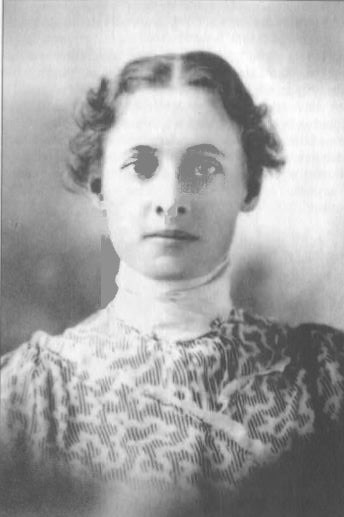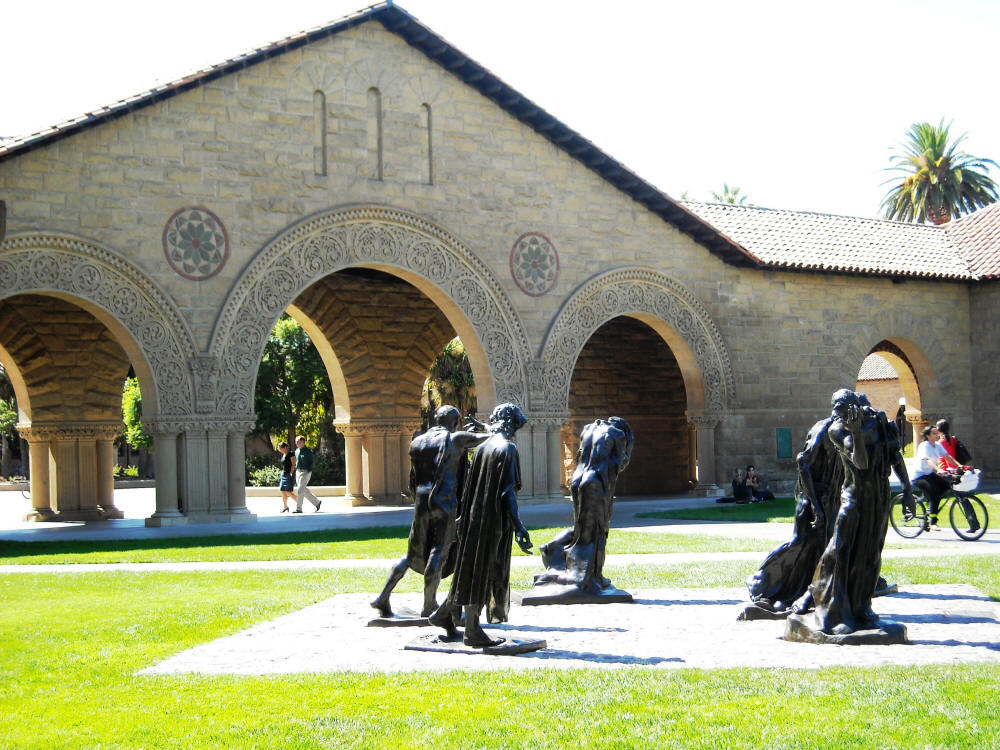

Partner Lillian Palmer, buried together
Queer Places:
246 Chestnut St, Pacific Grove, CA 93950, USA
1037 Broadway, San Francisco, CA 94133, Stati Uniti
609 S 3rd St, San Jose, CA 95112, Stati Uniti
151 Whitney Ave, Los Gatos, CA 95030, USA
Los Gatos Memorial Park, 2255 Los Gatos Almaden Rd, San Jose, CA 95124, Stati Uniti
Edith Williams 1st House, 242 Chestnut St, Pacific Grove
Edith Williams 2nd House, 241 Alder St, Pacific Grove
Edith Williams 3rd House, 243 Alder St, Pacific Grove
Lucy Mabel Pray House, 1325 Spruce, Berkeley
Reverend George W. Foote House (demolished), 475 Spencer Avenue, San Jose
Sequoia Lodge by the Sea (Dr. Anna Lukens House), 529 Ocean View Boulevard, Pacific Grove
Palmer House (now Arthur Monroe Free House), 66 S. Priest now S. 14th Street, San Jose
Gertrude Austin House, 2728 Union Street, San Francisco
Lillian Palmer House, 218 Chestnut, Pacific Grove
Emily Williams House, 220 Chestnut, Pacific Grove
Jordan House (demolished), NE corner of Camino Real & 7th, Carmel
W.B. Richards House, 119 Grand Avenue, Pacific Grove
Pacific Grove Lookout (demolished), Lovers' Point near Japanese Tea Garden, Pacific Grove
Alice Wright House, 1715 Dayton Avenue, Alameda
Deer Park Inn Remodel, Highway 89/Alpine Meadows Rd, Tahoe City
"Wake Robin" Weekend House, Black Road, Santa Cruz
Pac. Grove Woman's Civic Club (demolished), 172 Grand Avenue, Pacific Grove
Howell House, 245 Ocean View Blvd., Pacific Grove
McIntire House, 117 S.17th Street, San Jose
Second story Additions to TenWinkel Cottage, 1071-73 Lombard St, San Francisco
Hill House, 426 36th Avenue, San Francisco
Cassidy House, 424-26 Mississippi, San Francisco
Kennedy House, 1027-31 Broadway, San Francisco
 Emily Eolian Williams (September 25, 1869 - June 3, 1942) was a
pioneering woman in architecture[1]
who was active in
Pacific Grove,
San Jose and
San Francisco in the early 20th century, at a time, when very few
women were able to enter the profession.[2][3]
She mainly designed houses, with conveniently planned interiors, and a few
institutional buildings and an exhibition stand at the
Panama-Pacific International Exposition in San Francisco.
Emily Eolian Williams (September 25, 1869 - June 3, 1942) was a
pioneering woman in architecture[1]
who was active in
Pacific Grove,
San Jose and
San Francisco in the early 20th century, at a time, when very few
women were able to enter the profession.[2][3]
She mainly designed houses, with conveniently planned interiors, and a few
institutional buildings and an exhibition stand at the
Panama-Pacific International Exposition in San Francisco.
The daughter of Edward Williams, president of the San Jose Water Works, and his first wife, Emily nee Miree, Emily Williams attended the California State Normal School in San Jose, today San Jose State University, and became a teacher in the Midway District, Santa Clara. She also studied at the University of the Pacific and, from 1892-93 to 1893-94, at the newly opened Leland Stanford University in Palo Alto. Around 1898, she met Lillian McNeill Palmer.[4] They discovered mutual interests and became lifelong partners. After Emily’s father died in 1899, she moved in with the Palmer family and Lillian’s parents, Donald and Annie Palmer, accepted her as a family member. Actually, in the 1910 US Census, she is listed as an “adopted“ daughter of the Palmers.[5] Lillian encouraged Emily to pursue her dream of becoming an architect and Emily supported Lillian's desire for journalism and metal artistry.[6]
In 1901, the two women moved to San Francisco where Emily studied for a semester drafting and architecture at a high school, the California School of Mechanical Arts, now the Lick-Wilmerding High School.[7] There she encountered a science teacher, Lilian Bridgman, who also aspired to become an architect and had already designed her own house with the encouragement of architect Bernard Maybeck. This quite likely encouraged Emily to continue her pursuit of architecture.[2] However, her modest architectural training does not compare to that of Julia Morgan who earned a Bachelor of Science in Civil Engineering from UC Berkeley after four years of study and a Certificate from the Ecole des Beaux-Arts in Paris, the highly regarded architectural school.[8] Emily's projects remained small-scale and mainly domestic.
After her studies, Emily tried to find a job as an architectural “draftsman” but was rejected as women were thought as not belonging in architecture. In order to gain experience, she used an inheritance from her father to build a small cottage in Pacific Grove with Lillian's help.[9] The two women, who completed all the work “with their own fair hands” without the help of craftsmen, received attention from the press and soon became a tourist attraction. The cottage is still inhabited today.
409 N 3rd St, San Jose, CA
1476 Willard St, San Francisco, CA

Stanford University, Palo Alto, CA
1037 Broadway, San Francisco, CA
Emily’s first client was her older sister, Edith, who believed in Emily's abilities and commissioned three cottages on adjacent lots as income property. Further commissions came from acquaintances of the Williams family and feminists such as Dr. Anna Lukens who wanted to avoid the harsh winters of New York and spend time in mild California.[10] Another client was the well-off Mrs. Lucy Pray who wanted her daughter to have a college education at the University of California. She commissioned a house in Berkeley so that her daughter could live at home while studying.[11] Another prominent client was Mrs. Jessie Jordan, wife of Stanford University President David Starr Jordan, who commissioned Emily to design a house for them in nearby Carmel while her husband was travelling.[12] The Jordans knew Emily from the time she studied at Stanford. Donald and Annie Palmer, the parents of Lillian, asked her to design a house at 66 South Priest (now 66 South Fourteenth) Street in San Jose, where Lillian and Emily lived at times.[13] This house, a listed historic property, is today known as the Arthur Monroe Free House, named after its second owner, a lawyer and US Representative.[14]
Emily also served as a role model for at least one woman desiring to become an architect.[2] In 1907, Emily designed a large house in San Francisco for Mrs. Gertrude Austin, a former resident of San Jose who knew the Williams family. While the design of the house was underway, the young Elizabeth Austin, then a student of architecture at the University of California at Berkeley, may have been able to participate in the discussion of the project between her mother and the architectural designer, Emily Williams, and observe the construction.
Small notices in the local Pacific Grove Daily Review and other dailies and an article in the San Jose Mercury and Herald – probably written by Lillian Palmer, who worked for the Mercury – resulted in commissions in Pacific Grove, Carmel, San Jose, San Francisco, and Berkeley. [2][3] Emily also designed two investment properties for herself and Lillian which, in the end, did not produce the anticipated financial gains as they could not maintain the necessary payments and had to sell them.
246 Chestnut Street, Pacific Grove, CA
With the help of a benefactor, Etta Belle Lloyd, Emily received two public commissions in Pacific Grove. The first, in 1907, was from the Woman’s Civic Club to design a public “Look-Out” on a rocky promontory in the Pacific Ocean called Lovers Point.[15][16] The second commission, a few years later, was to remodel two large wooden cabins into an attractive club house for the Woman’s Civic Club.[17] Despite the publicity generated by these projects, Emily did not seem to have gained any new clients from the woman’s club.[18][19]
In 1908, Emily and Lillian traveled to Europe and Asia for pleasure and study.[20] In Vienna, Emily studied classical architecture and Lillian metal work. On their return, they settled in San Francisco and Lillian was successful producing and selling her metal artwork at "The Palmer Shop".[21] Emily received only a few commissions but built their own home at 1037 Broadway and a weekend cabin “Wake Robins” in the Santa Cruz Mountains. Around 1920, the Palmers moved to Los Gatos and Emily designed a house for herself and Lillian on the same property. They lived in the Santa Cruz Mountains during the Great Depression while they rented out their San Francisco and Los Gatos houses for income. Around 1914, Emily received a most unusual commission for an exhibition stand for the Alaska Garnet Mining and Manufacturing Company which was owned and run by twelve women from St. Paul, Minnesota. The connection was quite likely established through Don Palmer, a mining engineer and father of Lillian Palmer. Unfortunately, no photos of the design have been found.
As earlier in Pacific Grove, Emily networked through the women’s network such as the Pacific Grove Woman’s Civic Club, and in San Francisco the Business and Professional Woman’s Club which was founded by Lillian Palmer.
151 Whitney Ave, Los Gatos, CA
Despite these networking efforts, Emily received only a few commissions in the early 1920s, and appears to have stopped working as an architect in 1924. Emily Williams died in 1942 in Los Gatos, suffering from lifelong asthma, and is buried at the Los Gatos Memorial Park, San Jose, California. She was eulogized by a moving obituary, probably written by her partner Lillian.[23][24]
“Death Wednesday morning, June 3, brought to a close the colorful life and career of Miss Emily E. Williams, beloved clubwoman and Los Gatos resident whose girlhood determination to establish women's rights in the business world led to personal success as an architect and gave inspiration to all women careerists.
With her death is also severed a "life-partnership" with Miss Lillian Palmer, whose own similar ideals concerning women's rights first aligned the two women together and formed the basis for a friendship of forty-four years duration... “
An article published in the San Jose Mercury and Herald on November 11, 1906, stated: "Miss Williams' houses have won her an enviable reputation... They are not only beautiful and artistic, but convenient, livable and planned to save steps and with places to put things." The article explained that Williams' interiors were better than those designed by men.[6]
Arthur Monroe Free House, San Jose, CA
Edith Williams House, Pacific Grove, CA
Edith Williams House, Pacific Grove, CA
220 Chestnut, Pacific Grove
218 Chestnut, Pacific Grove
Gertrude Austin House, San Francisco, CA
Hill House, San Francisco, CA
Kennedy House, San Francisco, CA
Lucy Washburn House, Pacific Grove, CA
Sequoia Lodge by the Sea, Pacific Grove, CA
TenWinkel Cottage, San Francisco, CA
W.S. Richards House, Pacific Grove, CA
Walter McIntire House, San Jose, CA
William A. Howell House, Pacific Grove, CA
My published books: